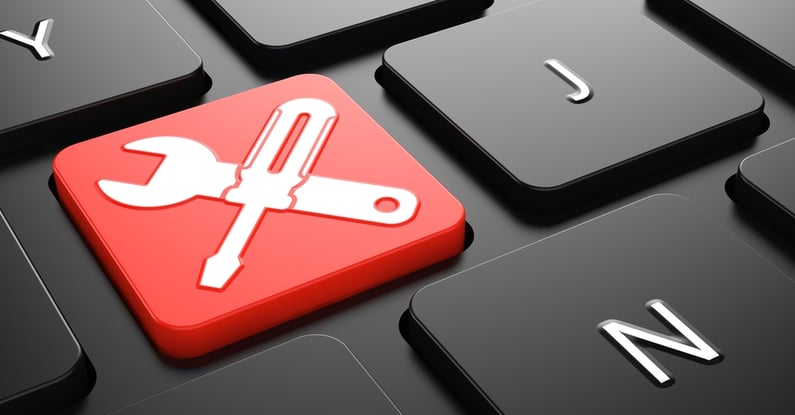This is the age of digital transformation. To keep up with swiftly changing technological and business conditions, companies are compelled to create new software applications, for both internal operations and customer-facing processes, on a regular basis.
At the same time, many companies also continue to support legacy systems and applications that have been critical to their success for years or even decades. These are still treated as essential assets because the business literally cannot operate without the functions they provide.
Yet, these venerable systems also represent a massive drain on the organizations that depend on them. In fact, Gartner estimates that about 85% of global IT expenditures are currently devoted to keeping legacy systems running. Because the hardware, software, and even the programming languages with which they are implemented were designed for what's now a long-ago technological age, it's usually extremely difficult to integrate them into a modern IT infrastructure. That's why legacy systems are often major obstacles for businesses attempting to achieve the digital transformation goals that are so vital for their future marketplace success.
As Gartner's Stefan Van Der Zijden observes,
"For many organizations, legacy systems are seen as holding back the business initiatives and business processes that rely on them."
But it doesn't have to be that way!
By tapping into the comprehensive app creation and integration capabilities offered by a modern, state-of-the-art low-code software development platform, businesses like yours can maintain, and even enhance, the value of legacy systems, while reducing their drain on your IT budget by at least 10%. And you can do so more quickly and cost-effectively, and with a much lower level of risk, than with traditional software creation methods.
In this article we want to take a look at how low-code can be your solution for increasing the present and future value of your legacy assets.
![]()
The legacy problem
Garner defines a legacy system as,
"an information system that may be based on outdated technologies, but is critical to day-to-day operations. Replacing legacy applications and systems with systems based on new and different technologies is one of the information systems (IS) professional's most significant challenges." (emphasis added)
The fact is, most companies with business-critical legacy systems are spending an inordinate amount every year just keeping them running. And that means they have less time and budget for developing the new innovations that are so critical for success, and even survival, in today's environment of aggressive digital disruption.
But, when legacy applications are indispensable to a company's operations, they cannot simply be discarded. Instead, they must somehow be modernized (or replaced) to meet new requirements.
How, then, do you update business-critical applications that typically are opaque (so old that nobody currently on staff has in-depth knowledge of how they work), brittle (making even small changes runs the risk of breaking the entire application), and isolated (they are self-contained silos, not designed to connect or share data with external systems)?
Options for updating legacy applications
Gartner suggests seven options for modernizing legacy apps:
- Encapsulate — Provide API access to the legacy app's existing data and functions without changing its internal operations.
- Rehost — Run the existing code unchanged on a different host.
- Replatform — Migrate to a different platform, rewriting code as necessary, but maintaining the existing structure, features and functions.
- Refactor — Restructure and optimize the existing code without changing its external behavior.
- Rearchitect — Create a new application architecture with updated capabilities.
- Rebuild — Rewrite the app from scratch while maintaining its external specifications.
- Replace — Develop an entirely new app that meets current requirements.
The order in which these are listed range from the easiest and least risky to implement (encapsulation) to the hardest and most risky (full replacement).
Why low-code is the ideal legacy modernization solution
No matter which of the modernization options you choose, low-code will provide the quickest and most cost-effective solution for creating apps that implement the necessary adaptations, added features, and integrations.
That's because low-code is a visual rather than procedural method of software development. Instead of creating programs using step-by-step code statements, low-code developers produce apps by dragging and dropping pre-built modules and templates (provided by the low-code platform) into an appropriate logical arrangement using a Graphical User Interface (GUI).
Because as much as 90% of the app's logic is already implemented in the pre-built modules, low-code development is far quicker and easier, and much less error-prone, than traditional methods. And because low-code facilitates use of an Agile methodology built on rapidly prototyping and iteratively refining business process logic and workflows, the quality of your apps will be significantly enhanced.
To get a sense of how low-code legacy modernization works in practice, let's look at how it would be applied to both endpoints of the Gartner options spectrum.
To modernize a legacy application using the encapsulation approach, you would create low-code apps that make the legacy data stores accessible through a modern interface, and which trigger the legacy app's internal operations as required for integration with external resources and workflows.
At the other extreme, if you choose to replace the legacy system entirely, developing, refining, and deploying the new applications you'll require can be done as much as 10 times faster using a low-code methodology.
But how do you decide which approach to legacy system modernization would work best for your business?
Helping you make that choice is a big part of our mission here at eSystems.

eSystems can help you create legacy value!
At eSystems, we take a step-by-step approach to helping you assess your current application portfolio and determine how best to bridge the gap between where you are and where you want to be.
As part of our Legacy Modernization service, we review your legacy applications and recommend the best approach for modernizing, or if necessary, replacing them. We'll show you how to extend the legacy lifecycle by automating your business processes, providing access to legacy data, and creating needed APIs and other integration resources.
We can also help you implement modern graphical user interfaces that can greatly improve the user and customer experience. On the other hand, if it's more important to maintain current procedures and workflows so that little retraining is required, our low-code solutions can add new functions and integrations to the system while allowing your employees or customers to continue interacting with the system through the user interfaces they're already familiar with.
Once we've helped you build a roadmap for your low-code legacy modernization journey, we work closely with our best-in-class technology partners, low-code platform provider OutSystems and automation/integration specialist Workato, to implement your solution in the quickest and most cost-effective manner possible.
Although building legacy value may seem like a huge undertaking, it brings countless benefits for your business now and for the future. And it's easier to get started than you may think. With eSystems, you choose the projects that will provide immediate value for your business, and we deliver a great solution fast!
If you'd like to know more about how eSystems low-code can help your company build legacy value, contact us today.
WRITTEN BY: Reggie Rusan | Chief Technology Officer




COMMENTS